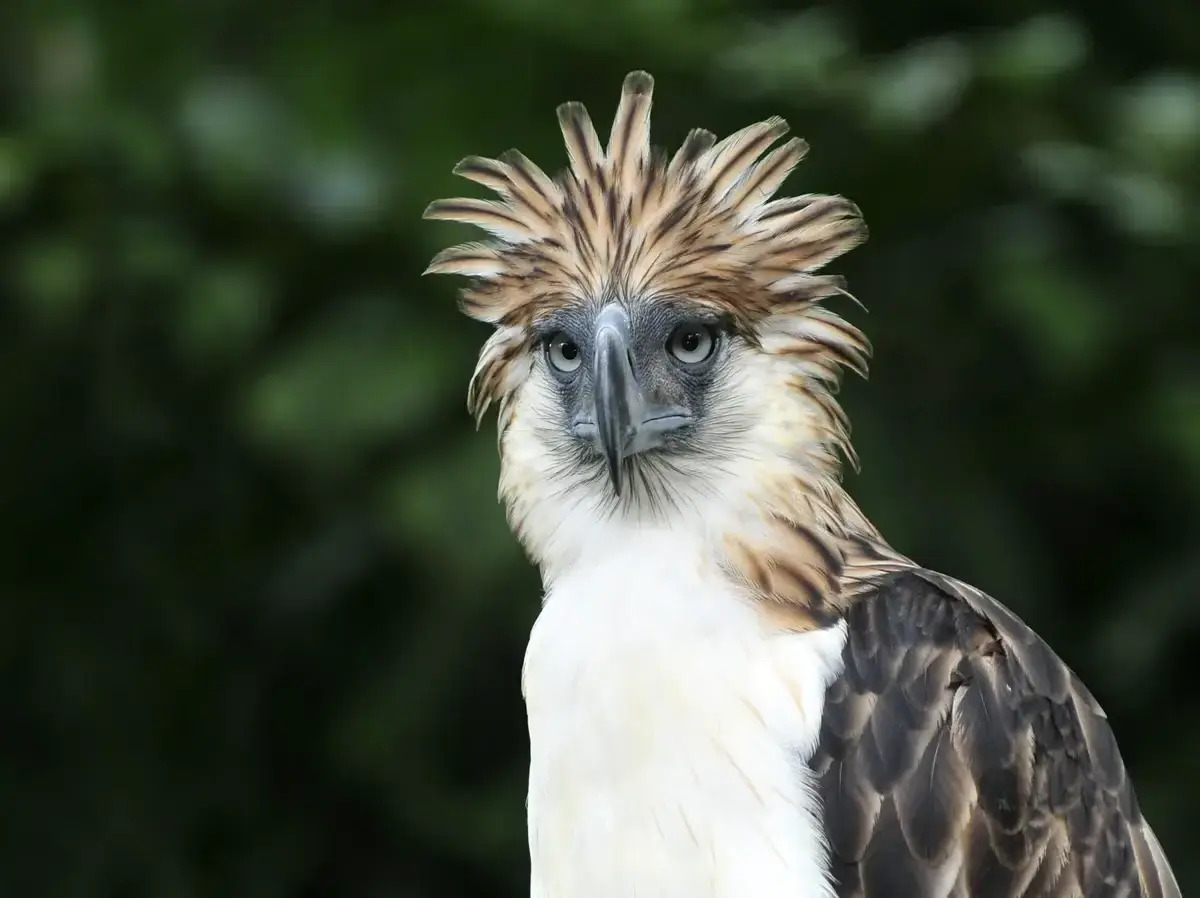
The Philippine Eagle, also known as the monkey-eating eagle, is one of the most majestic and rare birds in the world. Found only in the Philippines, this powerful raptor boasts a wingspan that can reach up to seven feet. Did you know that the Philippine Eagle is critically endangered? With fewer than 400 individuals left in the wild, conservation efforts are more crucial than ever. This bird of prey is not just a national symbol but also a vital part of the ecosystem. What makes the Philippine Eagle so unique? From its striking blue-gray eyes to its impressive hunting skills, there's much to learn about this incredible species. Dive into these 27 fascinating facts to understand why the Philippine Eagle deserves our attention and protection.
The Majestic Philippine Eagle
The Philippine Eagle, also known as the monkey-eating eagle, is one of the most powerful birds of prey. This bird is not only a symbol of strength but also a beacon of biodiversity in the Philippines. Here are some fascinating facts about this incredible bird.
-
The Philippine Eagle is the national bird of the Philippines, symbolizing the country's rich wildlife heritage.
-
It is one of the largest eagles in the world, with a wingspan that can reach up to 7 feet.
-
These eagles are known for their striking blue-gray eyes, which provide excellent vision for hunting.
-
The species was first discovered in 1896 by British naturalist John Whitehead.
-
Philippine Eagles have a unique crest of long, brown feathers that stand up when they are alarmed or excited.
Habitat and Distribution
Understanding where these eagles live and how they thrive in their natural habitat is crucial for their conservation.
-
They are found only in the Philippines, primarily on the islands of Luzon, Leyte, Samar, and Mindanao.
-
These eagles prefer dense, tropical rainforests where they can find ample prey and nesting sites.
-
Philippine Eagles build their nests high in the canopy, often in the tallest trees, to protect their young from predators.
-
Their nests are massive, sometimes measuring up to 8 feet in diameter.
-
The species is critically endangered, with an estimated population of only 400 pairs left in the wild.
Diet and Hunting
The diet of the Philippine Eagle is as fascinating as the bird itself. Their hunting skills are unparalleled in the avian world.
-
Despite being called the monkey-eating eagle, their diet includes a variety of animals such as flying lemurs, snakes, and birds.
-
They are apex predators, meaning they have no natural enemies in their habitat.
-
Philippine Eagles hunt primarily during the day, using their keen eyesight to spot prey from great distances.
-
They are known for their powerful talons, which can exert a grip strength of over 500 pounds per square inch.
-
These eagles often hunt in pairs, with one bird distracting the prey while the other swoops in for the kill.
Reproduction and Lifespan
The reproductive habits and lifespan of the Philippine Eagle are unique and contribute to their endangered status.
-
Philippine Eagles are monogamous and mate for life, forming strong pair bonds.
-
They typically lay only one egg every two years, making their reproduction rate very slow.
-
Both parents take turns incubating the egg, which hatches after about 60 days.
-
The eaglet remains in the nest for up to five months before it fledges.
-
Philippine Eagles can live up to 40 years in the wild, although many do not reach this age due to habitat loss and hunting.
Conservation Efforts
Efforts to save the Philippine Eagle are ongoing and involve various strategies to ensure their survival.
-
The Philippine Eagle Foundation, established in 1987, plays a crucial role in conservation efforts.
-
Captive breeding programs have been initiated to increase the population of these eagles.
-
Habitat protection is vital, with several protected areas established to safeguard their natural environment.
-
Education and awareness campaigns are conducted to inform the public about the importance of conserving this species.
-
Anti-poaching laws have been strengthened to deter illegal hunting and trading of these birds.
Cultural Significance
The Philippine Eagle holds a special place in the culture and traditions of the Filipino people.
-
It is featured on the 50-centavo coin, highlighting its importance to the nation.
-
The eagle is often depicted in Filipino art, literature, and folklore, symbolizing bravery and resilience.
The Majesty of the Philippine Eagle
The Philippine Eagle stands as a symbol of strength and resilience. With its impressive wingspan and striking appearance, this bird of prey is a true marvel. Found only in the Philippines, it faces numerous threats, primarily due to deforestation and habitat loss. Conservation efforts are crucial to ensure its survival.
Learning about this majestic eagle reminds us of the importance of protecting our natural world. Each fact about the Philippine Eagle highlights its unique role in the ecosystem and the urgent need for conservation. By spreading awareness and supporting conservation programs, we can help secure a future for this incredible species.
So, next time you think about endangered animals, remember the Philippine Eagle. It’s not just a bird; it’s a symbol of hope and a call to action for preserving our planet’s biodiversity.
Was this page helpful?
Our commitment to delivering trustworthy and engaging content is at the heart of what we do. Each fact on our site is contributed by real users like you, bringing a wealth of diverse insights and information. To ensure the highest standards of accuracy and reliability, our dedicated editors meticulously review each submission. This process guarantees that the facts we share are not only fascinating but also credible. Trust in our commitment to quality and authenticity as you explore and learn with us.
